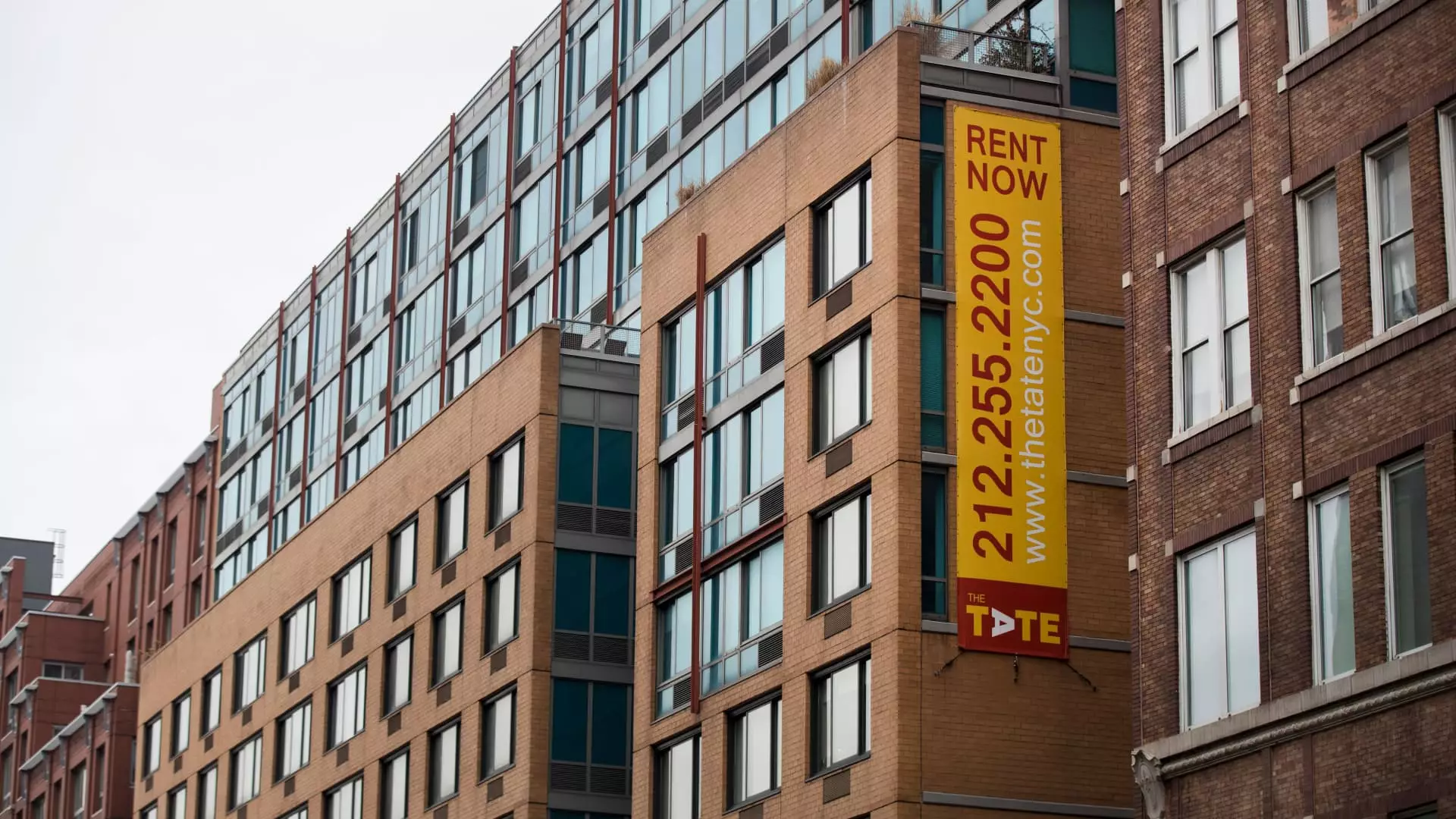In an era marked by economic uncertainty and unexpected challenges, the rental market has taken an intriguing turn. Analysts like Alex Goldfarb from Piper Sandler highlight a remarkable trend: rental turnover in urban markets has plummeted to just 30%, significantly below the historical average of 50%. This unprecedented decline raises questions about the underlying motivations for such enduring tenant loyalty and the implications for both renters and landlords. The current landscape isn’t just a reflection of personal choices; it’s a vivid portrayal of systemic economic pressures that compel renters to think twice before moving.
The Conundrum of Home Ownership
The aspiration to own a home has long been a cultural cornerstone, yet the soaring costs of purchasing property have effectively barred many from entering the market. Coupled with rising interest rates and inflated housing prices, the dream of home ownership has become more of a mirage than a reality for countless individuals. As a result, many renters are opting to renew their leases rather than risk the tumultuous waters of buying a home. This reluctance to leave rental apartments can be viewed as both a symptom of the current economic malaise and a cautious approach to personal financial management.
Suburban Appeal: The Shift in Living Preferences
Another dimension to this phenomenon is the increasing preference for suburban apartments. These spaces generally offer more room and comfort, catering to the evolving needs of renters who may have shifted their priorities post-pandemic. The allure of larger living spaces, coupled with a faster-paced move away from dense urban environments, is nudging renters to remain in locations that promise a better lifestyle—without the exorbitant costs of transitioning to home ownership. This shift is not simply about square footage; it’s a fundamental change in how people choose to live and invest their resources.
The Landlords’ Boon: Profiting from Loyalty
For landlords, this wave of reluctant renters is more than just a curious social trend: it’s a financial windfall. With decreased turnover comes more substantial and consistent cash flow. Reduced expenses associated with tenant turnover—such as repairs and cleaning—allow landlords to bolster their bottom line. As Goldfarb points out, this evolution in tenant behavior is benefiting certain multifamily real estate investment trusts (REITs), particularly those with a strong presence in the West Coast markets where demand has surged. Landlords, thus, find themselves in an advantageous position, capturing better pricing from renewals.
The Market’s Resilience and Future Outlook
Despite previous declines linked to increased rental supply, the multifamily market is bouncing back. With rents rising 0.9% year-over-year as of the first quarter, there’s measurable recovery that signals renewed interest. The surge in positive net absorption since 2000 further demonstrates a robust demand that exceeds newly available units. This retraction in vacancy rates, which has dipped to 4.8%, serves as a pivotal turning point, suggesting that despite looming economic concerns, the fundamental strength of the rental sector remains resilient. However, there’s still caution to be exercised as the broader economic landscape continues to evolve.
As unexpected societal shifts occur in the rental market, it’s crucial to remain vigilant about the larger economic narratives driving these changes. The implications extend far beyond individual choices, reshaping our understanding of urban living and economic adaptability.

